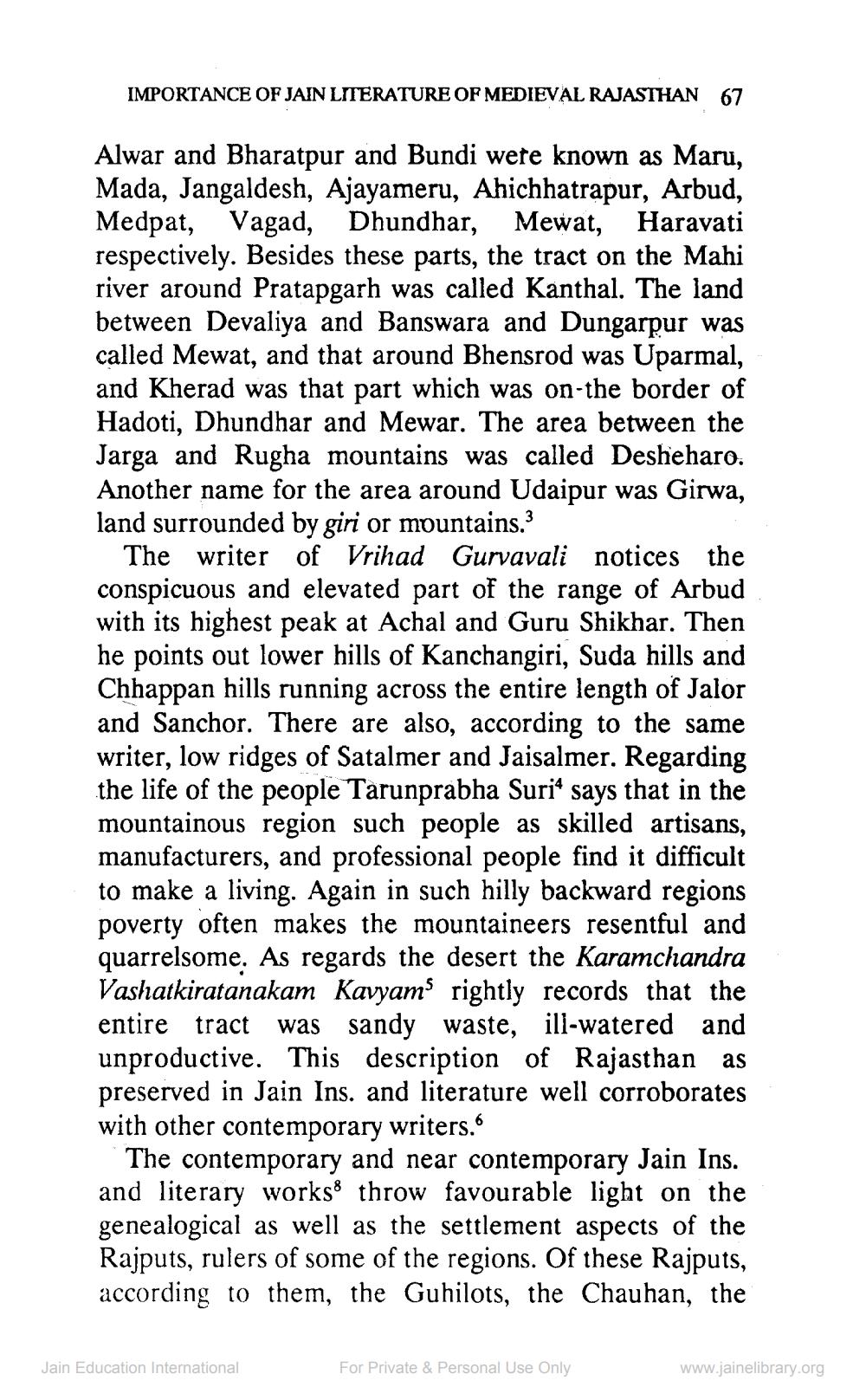________________
IMPORTANCE OF JAIN LITERATURE OF MEDIEVAL RAJASTHAN 67
Alwar and Bharatpur and Bundi wete known as Maru, Mada, Jangaldesh, Ajayameru, Ahichhatrapur, Arbud, Medpat, Vagad, Dhundhar, Mewat, Haravati respectively. Besides these parts, the tract on the Mahi river around Pratapgarh was called Kanthal. The land between Devaliya and Banswara and Dungarpur was called Mewat, and that around Bhensrod was Uparmal, and Kherad was that part which was on-the border of Hadoti, Dhundhar and Mewar. The area between the Jarga and Rugha mountains was called Desheharo. Another name for the area around Udaipur was Girwa, land surrounded by giri or mountains.3
The writer of Vrihad Gurvavali notices the conspicuous and elevated part of the range of Arbud with its highest peak at Achal and Guru Shikhar. Then he points out lower hills of Kanchangiri, Suda hills and Chhappan hills running across the entire length of Jalor and Sanchor. There are also, according to the same writer, low ridges of Satalmer and Jaisalmer. Regarding the life of the people Tarunprabha Suri' says that in the mountainous region such people as skilled artisans, manufacturers, and professional people find it difficult to make a living. Again in such hilly backward regions poverty often makes the mountaineers resentful and quarrelsome. As regards the desert the Karamchandra Vashatkiratanakam Kavyam3 rightly records that the entire tract was sandy waste, ill-watered and unproductive. This description of Rajasthan as preserved in Jain Ins. and literature well corroborates with other contemporary writers."
The contemporary and near contemporary Jain Ins. and literary works throw favourable light on the genealogical as well as the settlement aspects of the Rajputs, rulers of some of the regions. Of these Rajputs, according to them, the Guhilots, the Chauhan, the
Jain Education International
For Private & Personal Use Only
www.jainelibrary.org




